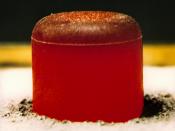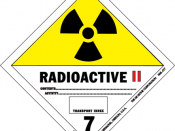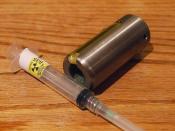Not all of the atoms of a radioisotope decay at the same time, but they decay at a rate that is characteristic to the isotope. The rate of decay is a fixed rate called a half-life. The half-life of a radioisotope describes how long it takes for half of the atoms in a given mass to decay. Some isotopes decay very rapidly and, therefore, have a high specific activity. Others decay at a much slower rate.
Radioactive decay is the spontaneous breakdown of an atomic nucleus resulting in the release of energy and matter from the nucleus. Remember that a radioisotope has unstable nuclei that does not have enough binding energy to hold the nucleus together. Radioisotopes would like to be stable isotopes so they are constantly changing to try and stabilize. In the process, they will release energy and matter from their nucleus and often transform into a new element.
This process, called transmutation, is the change of one element into another as a result of changes within the nucleus. The radioactive decay and transmutation process will continue until a new element is formed that has a stable nucleus and is not radioactive. Transmutation can occur naturally or by artificial means.
A radioisotope is a natural or artificially created Isotope of a chemical element having an unstable nucleus that decays, emitting alpha, beta, or gamma rays until stability is reached. The stable end product is a non-radioactive isotope of another element, i.e., radium-226 decays finally to lead-206. Very careful measurements show that many materials contain traces of radioactive isotopes. For a time it was thought that these materials were all members of the actinide series; however, exacting radiochemical research has demonstrated that certain of the light elements also have naturally occurring isotopes that are radioactive. Since minute traces of...



Good Job!
Great Essay! Deserves great grade and helped me alot. THANKS SO MUCH THEORIST!!!! =p
0 out of 0 people found this comment useful.